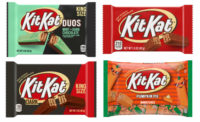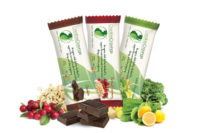Soft. Creamy. Smooth. Crunchy. Chewy. Brands are increasingly using texture claims like these. In fact, in 2014, the confectionery category (chocolates and sugar confectionery) had the second highest penetration rate for texture claims of new products launched.
According to a 2015 Innova study, texture is becoming a leading driver for taste perception in food, particularly sweets or candies.
From smoother, cream-filled sweets to chewier, juicier fruit candies, starches can be used to improve mouthfeel, chewiness and shape all while adding a variety of textures designed to enhance a consumer’s eating experience. However, there’s several things to keep in mind when formulating with starches to create texture in confections.
Viscosity and Texture Development
Whether using direct steam injection or vacuum cooking in heat processing, thin-boiling starches result in viscosity and texture development in high-sugar-solids paste while maintaining a low viscosity for depositing. Additionally, specialty thin-boiling starches can enable open-kettle cooking.
In low-temperature processed confections, cold-swelling starches, such as Tate & Lyle’s MIRA-THIK 468 and MIRA-GEL 463, can provide chewy and moderately elastic texture. Low-temperature pasting starches and cold-swelling starches also allow lower heat levels, so functional ingredients like vitamins and nutrients are retained.
Specialty thin-boiling starches can improve clarity and viscosity for gelling, opening up opportunities to create new, unique candy products. In fact, Tate & Lyle’s CONFECTIONERS G, MIRA-SET 285 andMIRA-QUICK MGL starches are widely used to replace certain hydrocolloids, such as gelatin, in some formulations to provide soft, chewy texture.
Process Functionality
The moulding, depositing and drying processes of gummy and jelly candies can be improved with moulding starches. They can accept and hold any shape or impressions and then absorb moisture from the deposited candy as it cools, dries and sets.
In applications like marshmallows, dusting starches can help form and cut confections and decrease product stickiness in the package. Finally, using high-fluidity starches to increase final depositing solids in gummies and jellies can help save time in the moulding starch stage and improve process efficiencies.
While starches are extremely versatile, some challenges could arise when using them in confections. Applications can range in difficulty from a simple jelly mould and filling, to a much more complex coating system or a layered eating experience. Whether seeking soft, creamy, smooth, crunchy or chewy, manufacturers should partner with a supplier with whom they can work side by side to determine the right solution for their application.







